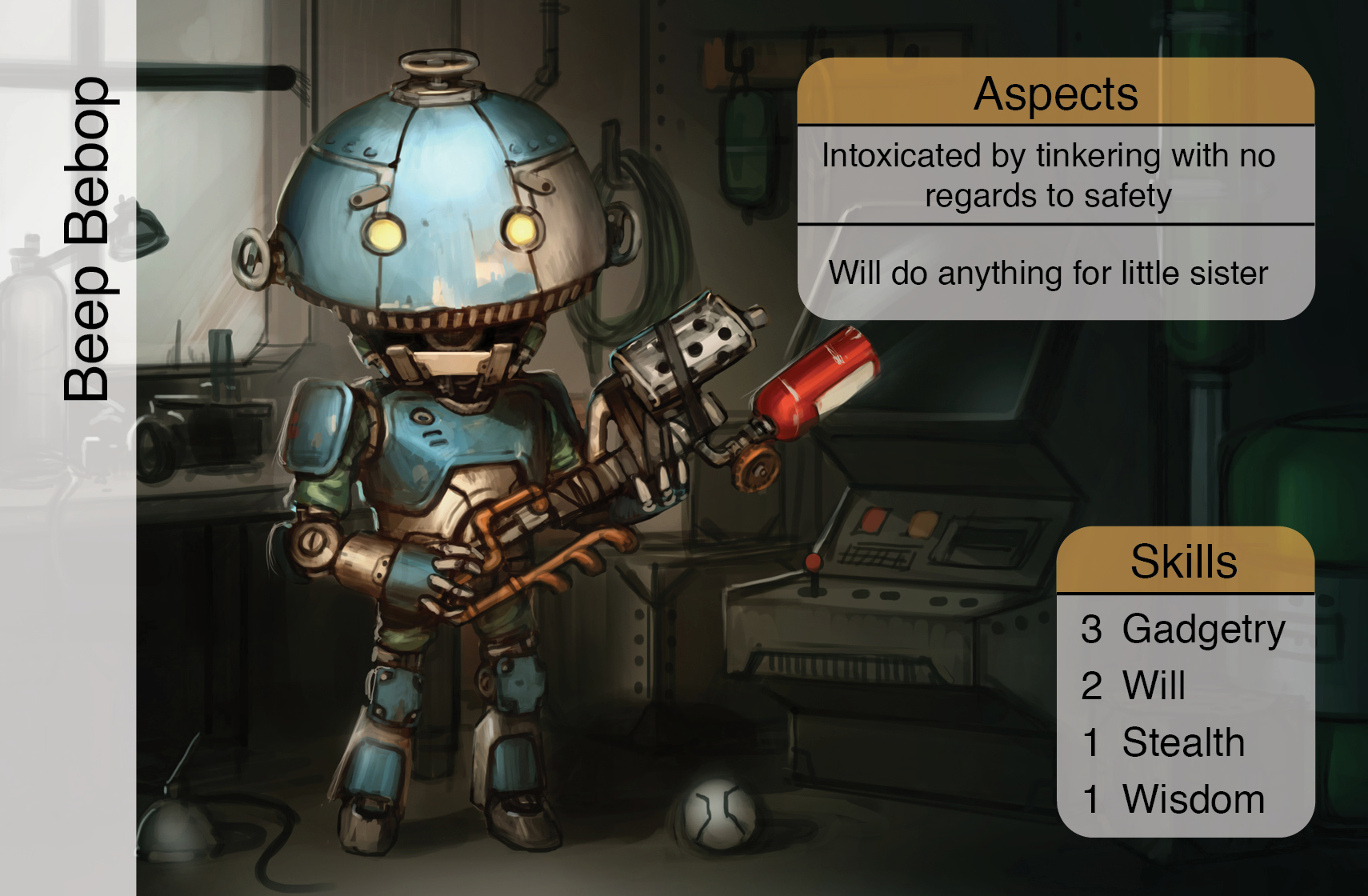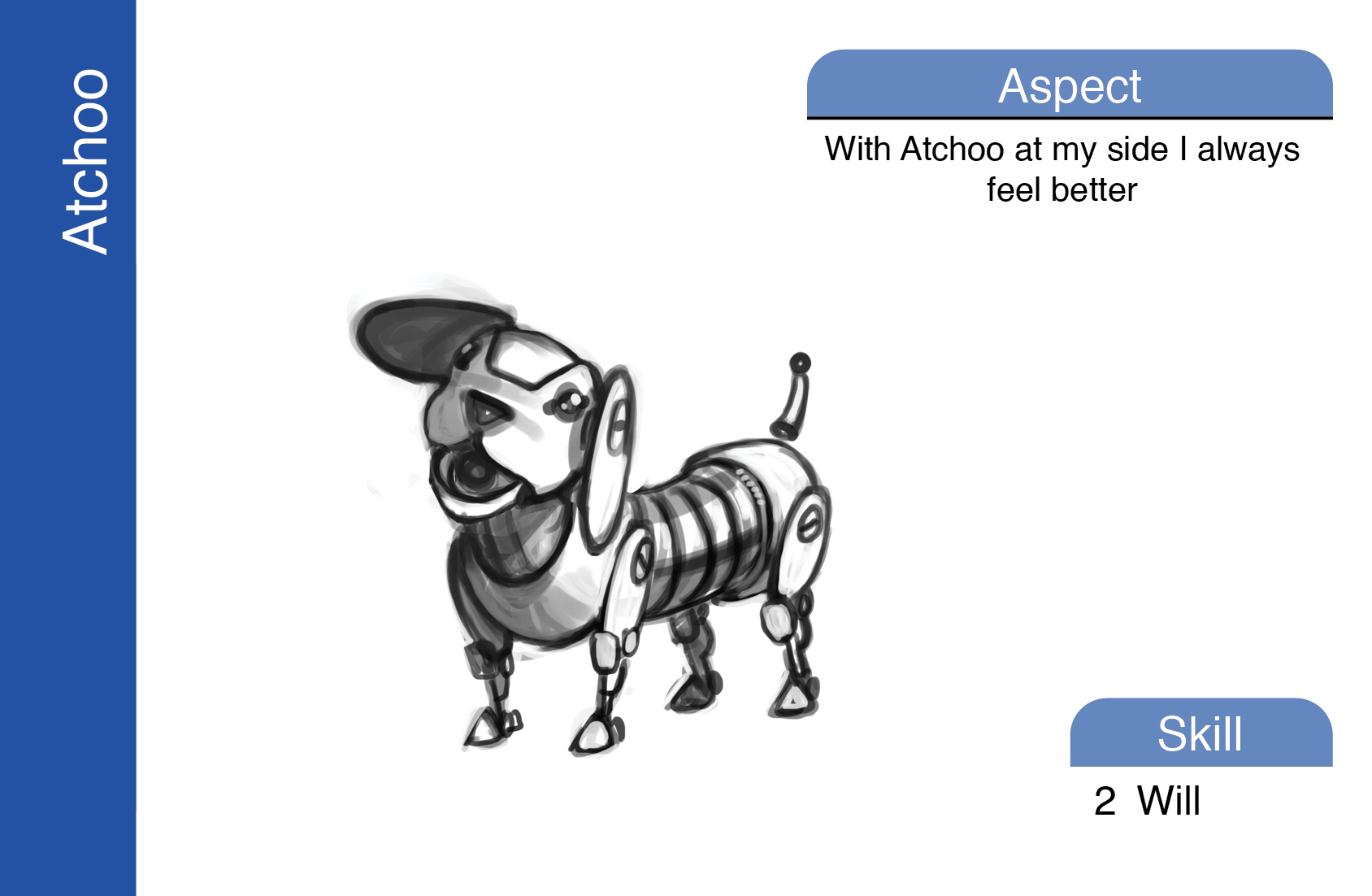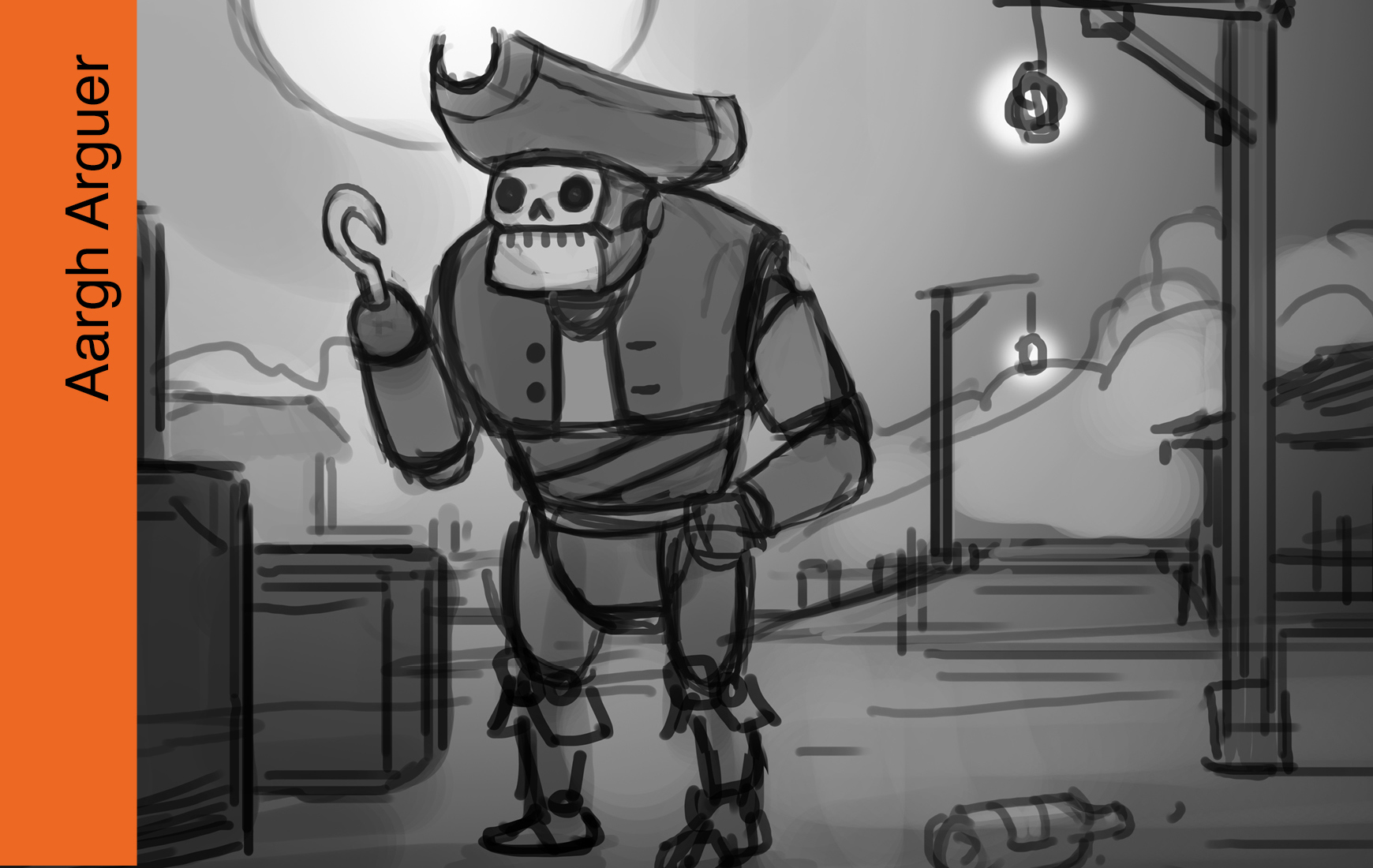*Picture of my eldest son in one of our costumes.
Keeping myself excited and engaged on a long term project can be hard. In this article I will cover the art and big changes that hooked me in and kept me moving forward. Sometimes at accelerated rates, sometimes at a calm flowing pace.
Art
I don't know about the rest of you but I have expensive hobbies. I don't really drink or go out, but what I do spend money on are my hobbies. My hobbies include: board games (of course), movie watching (which has gotten cheaper as of late), retro video games, costume building, and general making.
If you were to look at these things, they don't seem all that costly. Well you are obviously not a "Craine." When I say board games... I mean in a short period of time I have collected 200 or more. When I say movies I have a wall of DVD's and BluRays (it used to be in the thousands), and same with the old video games. Costumes can be cheap, but not they way I over build them. These are some of the issues I try to overcome so I am a little more thrifty, but usually I fail.
So when I got into the hobby of board game design (still not making money at it, so still a hobby), spending money wasn't a hug deal, it was just part of the act of creating.
I also know that I have a hard time with longer term projects. I can get bored and lose interest, so I wanted to find a way to keep my head in the game. I did this via artwork.
The artwork was a 2 factor motivator for me. First, it is super super exciting to see a world that I have created in my head come to life that I can share with others. Second, even though the money was something I was okay spending, it helps solidify it in my mind as an investment. Most everything that I have spent money on will get done.
Because of the above reasons it was easy for my to start looking for artists and commissioning works so early in on the process. I went to deviantart.com and just started looking. I came across several people I thought would work and I emailed them. I heard back from two: John Ariosa and Kevin Lam. I started working with both and thought their styles were similar at first, but the more we did the more I realized it wasn't, so I had to choose one. Right around this time is when I realized John was the artist of Mice and Mystics, I had no idea when I reached out to him.
With some art flowing in and motivation along with it, I kept iterating on my design.
Mechanics
As I said from the last article I started looking into the Fate RPG system. I like what I saw with the role playing and decide to work it into my design (read shoehorn). I also decided to spend a little time on graphic design, but only a very little.



With my amazing looking cards and new mechanics I headed out into the world for more playtesting. Confident in the fact that this was a far superior experience.
Yup... I was right, but so very wrong. It was a better experience, but also very confusing. I thought I had the dice thing figured out. Just adding or subtracting one from our totals (Fate dice are 6 sided dice with 2 "+", 2"-", and 2 blanks).
I then found out the Fate system has an "Accelerated" version which streamlines their mechanics to make them easier to understand.
Version 6 replaced the Fate Core system with Fate Accelerated, so the cards changed again.
Because making a game more streamline and smoother means adding more things... right? This is not a knock on Fate Accelerated, but on how I choose to move my mechanics. Instead of streamling Fate Accelerated into something that would work for my game, I just pretty much used what was there.
Version 7 and 8 were just further iterations on these ideas. It was definitely better, but it still wasn't smooth. I couldn't get it right. Instead of getting stuck for too long, I moved on to other things that could distract me from my clunky game.


